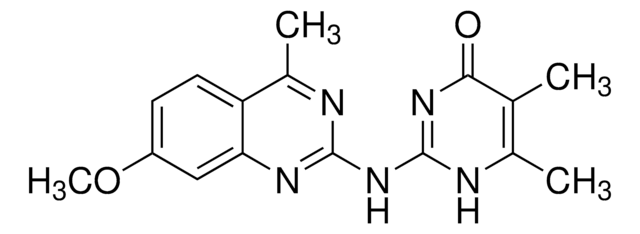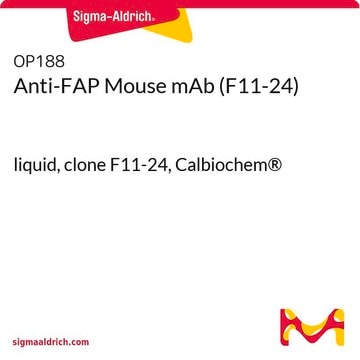416154
Isoginkgetin
≥98% (HPLC), solid, pre-mRNA splicing inhibitor, Calbiochem®
Synonym(s):
Pre-mRNA Splicing Inhibitor, Isoginkgetin, 8-(5-(5,7-Dihydroxy-4-oxo-4H-chromen-2-yl)-2-methoxyphenyl)-5,7-dihydroxy-2-(4-methoxyphenyl)-4H-chromen-4-one
About This Item
Recommended Products
product name
Pre-mRNA Splicing Inhibitor, Isoginkgetin, The Pre-mRNA Splicing Inhibitor, Isoginkgetin, also referenced under CAS 548-19-6, blocks the spliceosome-meidated splicing process.
Quality Level
Assay
≥98% (HPLC)
form
solid
manufacturer/tradename
Calbiochem®
storage condition
OK to freeze
protect from light
color
yellow
solubility
DMSO: 100 mg/mL
shipped in
ambient
storage temp.
2-8°C
InChI
1S/C32H22O10/c1-39-18-6-3-15(4-7-18)26-14-24(38)31-22(36)12-21(35)29(32(31)42-26)19-9-16(5-8-25(19)40-2)27-13-23(37)30-20(34)10-17(33)11-28(30)41-27/h3-14,33-36H,1-2H3
InChI key
HUOOMAOYXQFIDQ-UHFFFAOYSA-N
General description
Packaging
Warning
Other Notes
O′Brien, K., et al. 2008. J. Biol. Chem.283, 33147.
Yoon, S,O., et al. 2006. Mol. Cancer Ther.5, 2666.
Legal Information
Storage Class Code
11 - Combustible Solids
WGK
WGK 3
Flash Point(F)
Not applicable
Flash Point(C)
Not applicable
Certificates of Analysis (COA)
Search for Certificates of Analysis (COA) by entering the products Lot/Batch Number. Lot and Batch Numbers can be found on a product’s label following the words ‘Lot’ or ‘Batch’.
Already Own This Product?
Find documentation for the products that you have recently purchased in the Document Library.
Our team of scientists has experience in all areas of research including Life Science, Material Science, Chemical Synthesis, Chromatography, Analytical and many others.
Contact Technical Service








